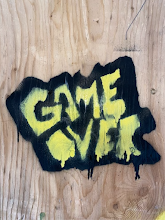Isle Aux Morts translates to Isle of the Dead, which is appropriate as, when I photographed it the first time, I was greeted with a rather distinctive odour. A deceased whale, of a type I could not identify seeing as my skills at identifying carcasses are not very developed, had washed up in the small cove behind the plant.

Cars were arriving with loads of teenagers holding their noses,
 some even feigning retching actions. For a moment, I was wondering if I would be able to stay there and photograph all day. But there was good light (a rare find on the south coast), and I was determined to “experience the space”. Oddly enough, it only took 15 or 20 minutes to habituate to the odour. But I do think this first impression influenced my choices that day and on a subsequent day of shooting.
some even feigning retching actions. For a moment, I was wondering if I would be able to stay there and photograph all day. But there was good light (a rare find on the south coast), and I was determined to “experience the space”. Oddly enough, it only took 15 or 20 minutes to habituate to the odour. But I do think this first impression influenced my choices that day and on a subsequent day of shooting. The plant itself is showing many years of neglect, it is falling apart
The plant itself is showing many years of neglect, it is falling apart  at the seams and even dangerous to walk around. Again, I was struck by how these places are simply cast off once their initial utility has run its course. It is understandable that politics and some resentment is articulated in this neglect, but at the same time, the politicians and merchants do not usually live in these communities, which is obviously an important problem.
at the seams and even dangerous to walk around. Again, I was struck by how these places are simply cast off once their initial utility has run its course. It is understandable that politics and some resentment is articulated in this neglect, but at the same time, the politicians and merchants do not usually live in these communities, which is obviously an important problem. There were still signs of the activities performed at this site strewn about. A roll of green stickers marked “COD/MORUE” found its way into my camera bag, fish tags, disintegrating plastic fish vats, various bits of machinery; it all made the site look as if some small cataclysm happened here. There was an air of violence and it found its way into several of my photographs.
There were still signs of the activities performed at this site strewn about. A roll of green stickers marked “COD/MORUE” found its way into my camera bag, fish tags, disintegrating plastic fish vats, various bits of machinery; it all made the site look as if some small cataclysm happened here. There was an air of violence and it found its way into several of my photographs.


1 comment:
I was home sick looking up the few pics I could find of IAM. I was happy to come across this site and see what had happened to the old plant. Looks very different, especially with that section torn down. Kind of sad but I felt a sense of loss seeing that part of the plant gone. So many childhood memories playing in that area... Thanks for the great photo's.
Post a Comment